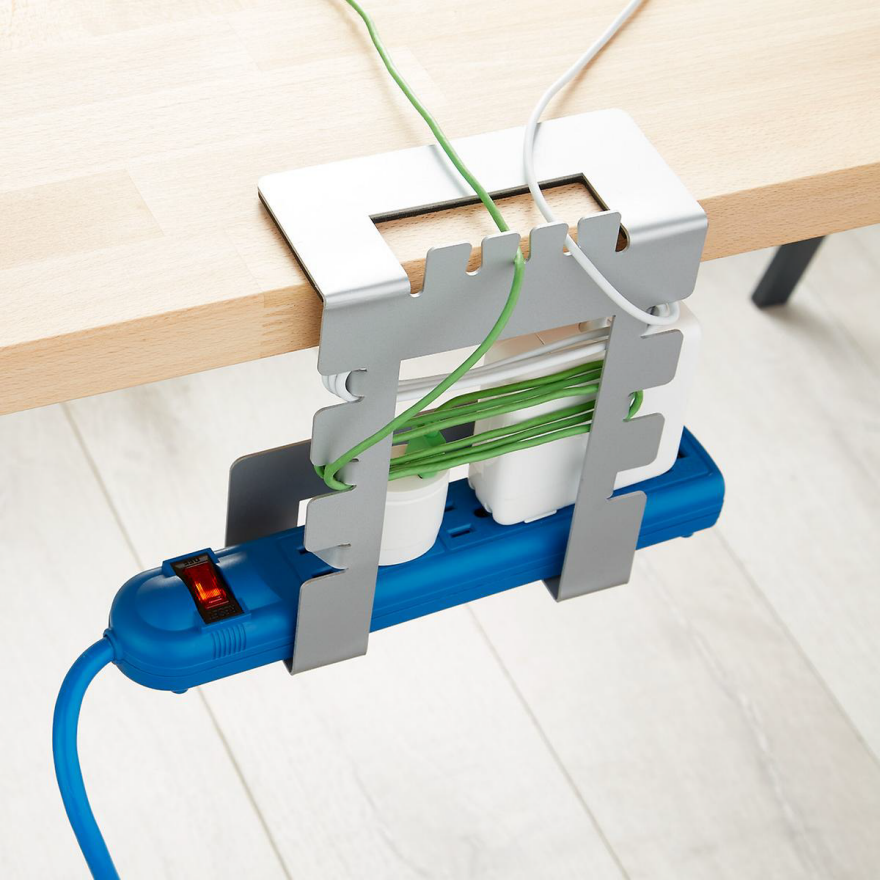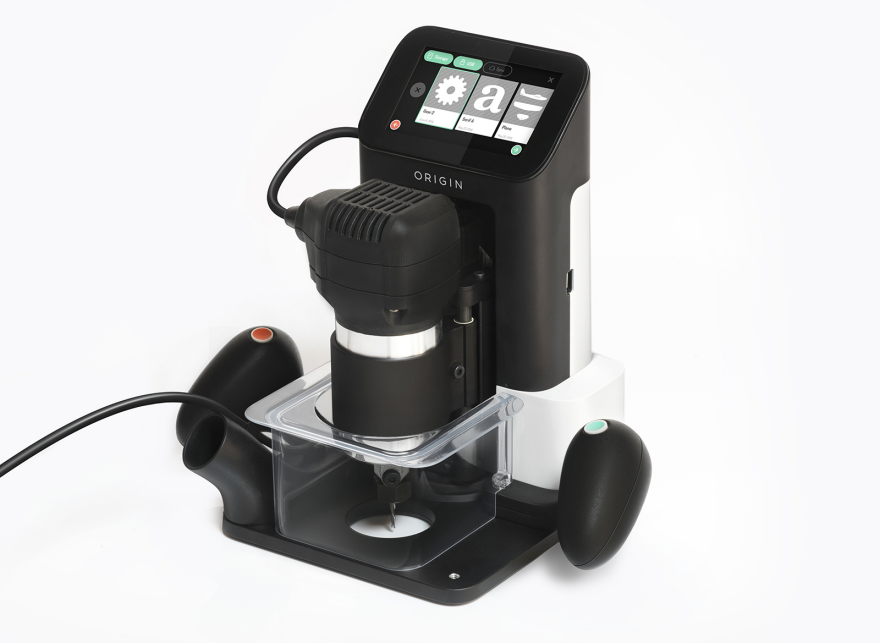The Shaper Origin's demo videos look pretty awesome—but just how, precisely, would the tool fit into your workflow? Whether you're a shop newbie or a pro with a router/CNC mill, you've likely got some questions about what it would be like in actual use. Let's get them out on the table.
First off, the Origin will still have certain limitations that all routers do, like burning the workpiece if your feed rate is incorrect, and having to deal with clamps getting in the way while working on smaller pieces.
But those are all problems with established solutions. So let's move on to the positives.
No More Templates
The router mavens among you will instantly recognize that the Origin obviates the need to make templates. This has two clear benefits. The first is that, obviously, you needn't take the time to make a physical template, with all of the care that entails; because a template will be copied precisely, each radii and tangent must be dead-nuts perfect. For those of you that hate sanding MDF, the no-template-making thing alone will be attractive.
The second is that with an Origin, you wouldn't need to store templates. This isn't an issue if you've got a shop the size of, say, Jory Brigham's...
...but for those of you operating out of tight spaces, having templates that exist only as 1s and 0s sure frees up a lot of wall space.
Portable & Stowable
The second obvious, killer feature of the Origin is its physical size, which again has two advantages. The first being that this tool can arguably do whatever a 4x8, or 5x10 gantry-style CNC mill can without occupying those machines' tremendous, permanent in-shop footprints. Again, for space-tight shops this is a win.
The other huge benefit to the size is you can easily haul this thing to the jobsite. Imagine being able to cut, say, signage on-site, and even modify it on-the-fly. In the hands of someone from a relevant trade, the portability alone is bound to be a game-changer; over time, reducing the hours spent shuttling back and forth from your shop will lead to increased profits.
Then there's the size, and relatively squarish shape, of the base. Because it's got increased contact area on the camera-side of the bit, it ought be easy to keep this thing stable while working close to an edge, provided the edge is kept on the operator side. (Admittedly, one small downside of the larger base is that clamps may more easily get in the way.)
Questions We've Got
So above are what we see as the most obvious benefits. But we've still got plenty of questions, particularly after we saw this demo video:
Couple things here. First off, the guy making the speaker housing is cutting box joints for the corners.
It goes without saying that a router cannot cut box joints on a horizontal sheet, as the bit is round and cannot cut proper corners:
So we went back and watched it closely, and spotted this:
As you can see, the operator has rigged up a hole in his workbench that allows him to clamp the piece vertically, so that he's routing into the endgrain. Aha, makes perfect sense. The set-up can be fiddly, as the workpiece must be plumb in two axes, set to precisely the right height, and ought have backer boards attached to prevent blowing out the grain, but that's all doable.
It's when we look at the perfect end-fingers in the final product...
...that our question becomes, how does he index the workpiece to the cutting head? We can see that the cut starts precisely at the edge of the board, allowing the one on the very edge to be the same width as all of them; how is that achieved, can the Origin's on-board camera detect the edge of a board with that level of accuracy?
Similarly, in the video where the woman is making the plug...
...it appears that she had the plug already cut, then places it on the workpiece that will receive it, then appears to cut the negative in that precise location. Is the Origin scanning the plug itself, or cutting the perfect negative by using the same file as the plug, but with an inside/outside offset?
Questions we've got beyond that:
How efficient is the dust collection?
Can the camera become obscured by sawdust kicked up during use?
How does one "zero" the bit to the worksurface?
Is it a pain in the ass getting the tape off, does it leave adhesive residue that must then be removed prior to finishing?
What kinds of service options are available if the product malfunctions?
Questions You've Got
There are plenty of you reading this who have more daily experience with routers and CNC mills than those of us on this side of the screen. So we'd like to hear the questions that you'd need answers to before considering one of these. Because we can get Shaper on the phone and get all of the answers. So let us know in the comments below, or if you'd rather ask privately, e-mail us at core77editors [at] gmail -dot- com, subject line: "Shaper Questions." We'll round them all up and get back to you with the answers.
![]()






































































































